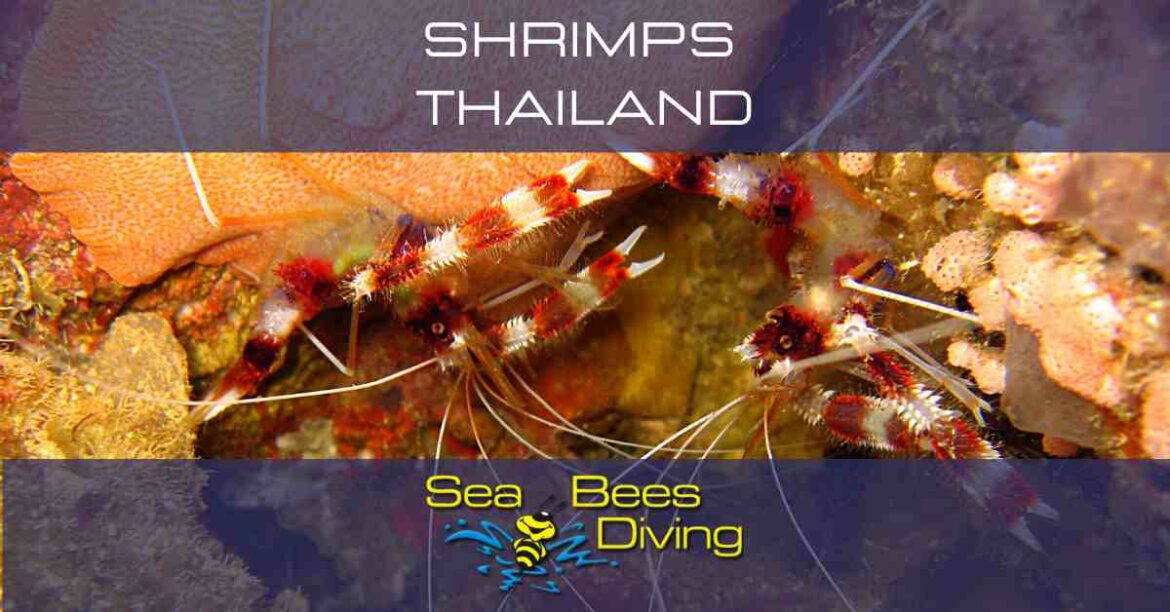Shrimps of the Andaman Sea
Few marine creatures are as fascinating and diverse as shrimp. While divers often encounter these tiny wonders beneath the waves, many non-divers may not fully appreciate the incredible variety and beauty of shrimp species. In this article, we'll introduce you to some of the shrimp varieties that divers are likely to come across in the waters of Thailand.
The Rich Shrimp Diversity in Thailand
Before delving into specific shrimp species, it's essential to understand the abundance of shrimp in Thailand's waters. With its diverse marine ecosystems, Thailand is home to a myriad of shrimp species, each with its unique characteristics and behaviors.
Peacock Mantis Shrimp
- Appearance: Peacock Mantis Shrimp are known for their vibrant colors, ranging from striking blues and greens to reds and oranges. Their bodies are compact, and they possess powerful, elongated claws.
- Habitat: Found in coral reefs and sandy areas, these shrimp are adept at blending into their surroundings. They often construct burrows in the substrate where they can retreat for safety.
- Behavior: Peacock Mantis Shrimp are skilled hunters, using their incredibly strong and fast-clasping appendages to catch prey. Their hunting technique involves smashing or spearing their prey with remarkable precision.
- Observation Tips: Divers are captivated by their vivid colors and the lightning-fast movements of their claws. However, caution is advised, as these shrimp have powerful claws that can deliver a formidable strike.


Harlequin Shrimp
- Appearance: Harlequin Shrimp are small with a distinctive coloration featuring bright patterns of white, blue, and orange. They have flat bodies and large pincers.
- Habitat: Typically found in coral reefs, these shrimp prefer environments with ample hiding spots. They may be seen on or near sea stars, which constitute a significant part of their diet.
- Behavior: Harlequin Shrimp are specialized predators of sea stars. They use their pincers to flip the sea star onto its back, rendering it immobile, and then consume its tube feet.
- Observation Tips: Divers can witness their unique hunting behaviors, making for a captivating underwater spectacle. It's essential to approach them with care to avoid disturbing their natural activities.
Boxer Shrimp
- Appearance: Boxer Shrimp are named for their stance, resembling a boxer's pose. They have vibrant colors, intricate patterns, and unique body shapes.
- Habitat: Often found in pairs, these shrimp exhibit social behaviors and are commonly seen in and around coral formations. They establish territories and may display interesting interactions with one another.
- Behavior: Boxer Shrimp engage in fascinating courtship rituals and are known for their intricate social behaviors. They use their antennae and body movements to communicate with each other.
- Observation Tips: Divers can enjoy observing their unique behaviors, including their "boxing" stances and interactions with their mate. Care should be taken not to disrupt their natural behaviors.


Peppermint Shrimp
- Appearance: Peppermint Shrimp are recognizable by their translucent bodies and distinctive red or green stripes. They have a slender appearance and are relatively small in size.
- Habitat: Often found in coral crevices and rocky areas, Peppermint Shrimp contribute to coral health by consuming unwanted pests, particularly Aiptasia anemones.
- Behavior: These shrimp are valued for their pest control capabilities, as they feed on Aiptasia anemones and other harmful organisms. They are nocturnal, becoming more active during the night.
- Observation Tips: Divers can spot them in and around coral structures, where they actively feed on pests. Their small size and subtle colors make them a charming addition to the underwater scenery.
Cleaner Shrimp
- Appearance: Cleaning Shrimp come in various species, each with unique colors and sizes. They often have elongated bodies and distinctive appendages.
- Habitat: Cleaning Shrimp set up cleaning stations on the reef, attracting larger marine organisms seeking parasite removal services. These stations are vital for maintaining the hygiene of the underwater ecosystem.
- Behavior: These shrimp play a crucial role in the ecosystem by removing parasites, dead tissue, and debris from the skin and gills of larger fish. They exhibit cooperative behavior and may clean multiple clients in a session.
- Observation Tips: Divers can observe the cleaning stations where these shrimp provide their services to larger fish. The cooperative nature of this behavior is a testament to the intricate relationships within the marine community.



